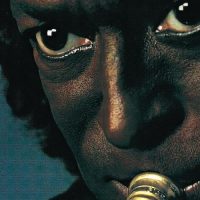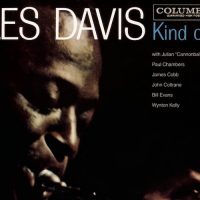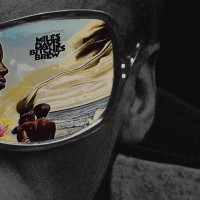Another in a series of overlooked jazz classics. This time we look at diamonds in the rough by perhaps the single most influential figure in jazz since World War II: Miles Davis.
A high profile artist whose work has been picked apart as much as Davis’ won’t have a lot of unturned stones despite some 45+ years of recording history. In fact, his entire Columbia catalogue from ‘Round Midnight’ in 1955 to ‘Bitches Brew’ in 1969 has been well regarded for many years now and are generally very easy to obtain; much of the same recordings even show up in different releases.
So, we’ll ignore that big chunk to concentrate on albums outside the so-called golden era:
1. Walkin’ (1954)
The success of the 1949-1951 The Birth Of The Cool sessions proved to be more than what a young Miles Davis could handle and soon he fell into an abyss of heroin addiction. But a few years later, he crawled out of it on his own and was ready to reclaim the mantle of jazz’ foremost innovator.
In the year and a half before he got his fame back with a memorable performance at Newport in 1955, Miles recorded several albums with some of the top players at the time that signaled his comeback was imminent. Walkin’, the best of these, had Miles backed up by Horace Silver, Percy Heath and Kenny “Klook” Clarke.
The two lead off tunes were blues burners with sublime solos taken by JJ Johnson and Lucky Thompson. Miles himself plays with a style that sounds more be-bop than cool, but it fits the occasion. Other tracks consist of some of the earliest recordings of Miles’ now recognizable muted sound. Well recorded by the legendary engineer Rudy Van Gelder.
2. A Tribute To Jack Johnson (1970)
One of Miles’ most paradoxical recordings. It’s mostly a stripped down rock jam session, but there are several interludes dubbed in. The spontaneity and unpredictability of ‘Right Off’ contrasts with the majestic final section of the only other track, ‘Yesternow’.
There’s really no fully formed songs here, just ideas that almost seem randomly juxtaposed together. But somehow it all works. The psychic interplay between guitarist John McLaughlin and drummer Billy Cobham is worth the price of admission alone. And Miles had never played a meaner horn, it’s as if he stepped into the ring for a championship match, like the subject of this record. One of the finest moments ever in fusion jazz.
3. Star People (1983)
The 1981 comeback after a six year hiatus showed the old master to sound frail and rusty, but after a couple of years, he got his chops back as good as before. In this outing, Miles doesn’t really introduce anything new to what he had been doing for a while, he simply executes better. In addition to the rock and funk influences, reggae is a bit more prominent here. But the nineteen minute title track is a wonder: a straight-ahead slow blues tune played by someone who oozed the blues even if he was never known for it.
Two master guitarists, John Scofield and Mike Stern, battle it out in an epic clash of the axes. The leader interrupts the mood every five minutes are so with synthesizer splotches of minor chords as if to startle the listener with a striking contrast. The Mad Genius is at it again.
4. Aura (1985)
Interesting story behind this one that I’ll try to condense as much as possible: Danish flugelhorn player Palle Mikkelbourg composes, arranges and records an album dedicated to Miles, who stopped by in Denmark at Mikkelbourg’s invitation as the project was completing. In a last minute decision, the man of honor agrees to dub his trumpet on top of the recordings.
Columbia, which had by this time was convinced that Miles had no more Bitches Brews left in him, promptly put the recording on the shelf for four years. What a shame, because Aura, while complex, is an aptly named record. Majestic Gil Evans overtones permeate the suite, punctuated by funk rhythms and McLaughlin’s cutting guitar.
Many passages make this sound very much of the mid-eighties, but Mikkelbourg’s inspired compositions and arrangements with Miles’ timeless tone easily overcome that.
5. Mark Isham; Miles Remembered: The Silent Way Project (1999)
Whoa, what’s this? Not only is this not Miles, but isn’t this guy the new age music trumpeter better known for his prolific movie soundtrack work?
Yep, that’s what I thought, too, but listen to this one. To tackle songs from Miles most enigmatic period (1969-1974) is a daunting task in itself, but Isham chooses to record them in a live setting and prefers to replicate the raw aspect of the early fusion period over the complexity of the multi-tiered keyboards, percussion and dubs of the time.
For someone known more for grand, sweeping and scripted music production required for the big screen, this is an especially amazing thing to pull off, but perhaps the live format probably has a lot to do with tempering Isham’s normal predisposition. Even the one original, “Internet”, is essentially a riff that Miles could have easily invented himself. And while Isham’s trumpet playing doesn’t duplicate the Original’s as well as, say, Wallace Roney, it’s pretty damned close; take a few notes out and you’re there.
Lagniappe pick: Live-Evil (1970)
If we must disqualify Isham’s record, then I would replace it with this one. The leadoff track ‘Sivad’ is about the most wicked piece to come from Miles (which says plenty) and the live tracks capture the brief period in which Keith Jarrett was playing in the band. Despite Jarrett’s later criticism of the music his former boss asked him to play, he actually sounds like he was a good fit in it.
- Nick Millevoi – ‘Moon Pulses’ (2024) - April 23, 2024
- Cannonball Adderley – ‘Poppin’ in Paris: Live at L’Olympia 1972′ (2024) - April 20, 2024
- Christian Marien Quartett – ‘How Long Is Now’ (2024) - April 18, 2024




